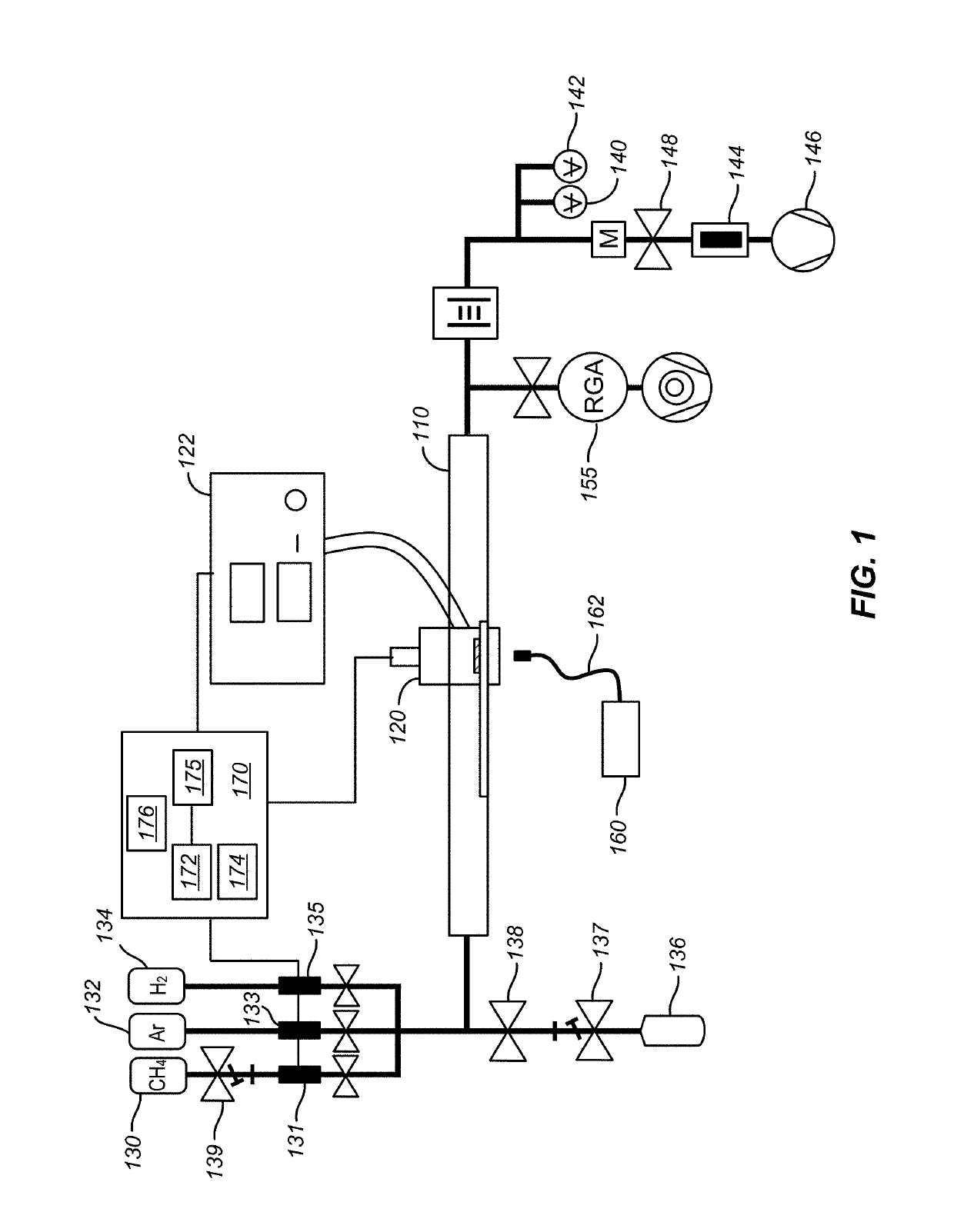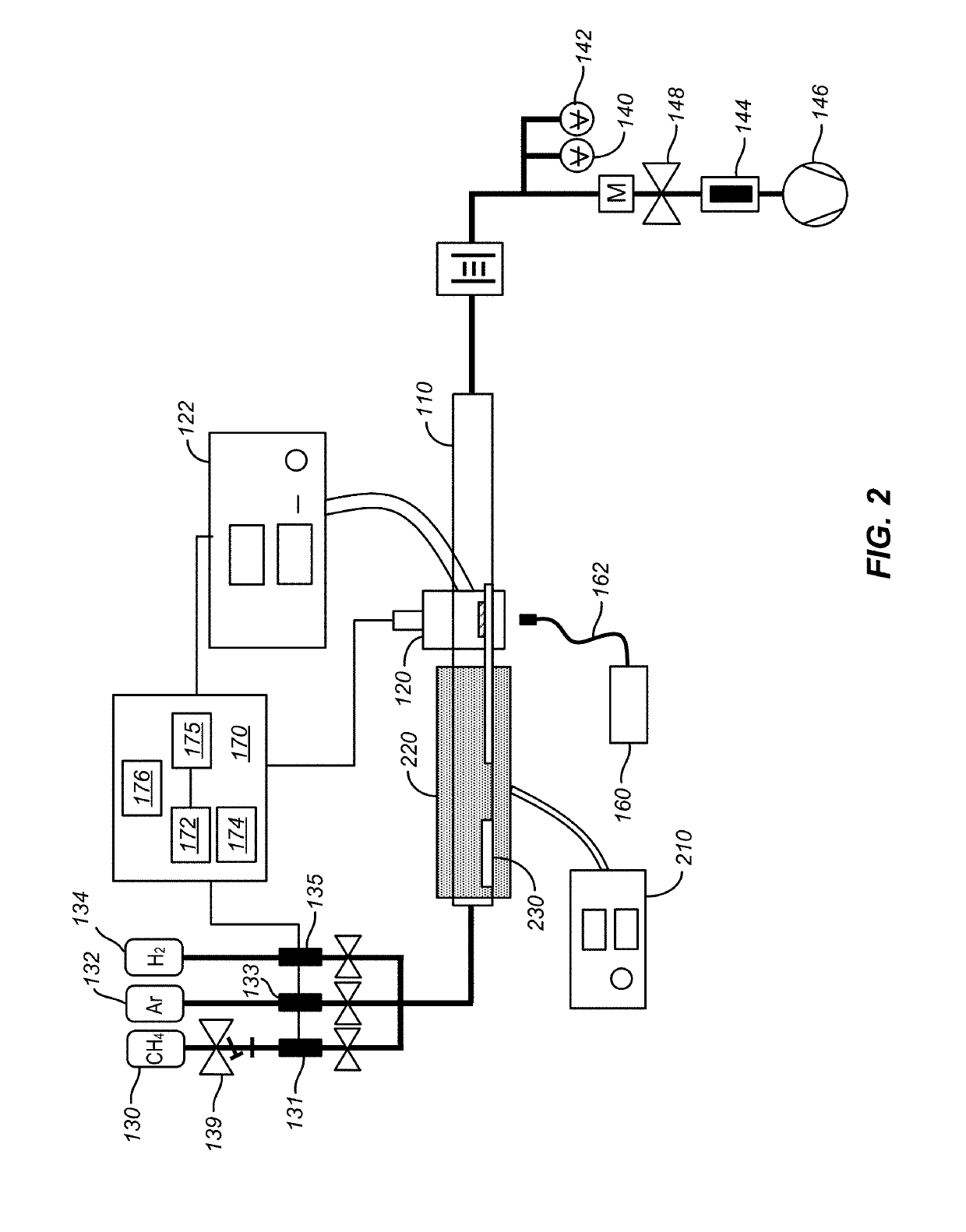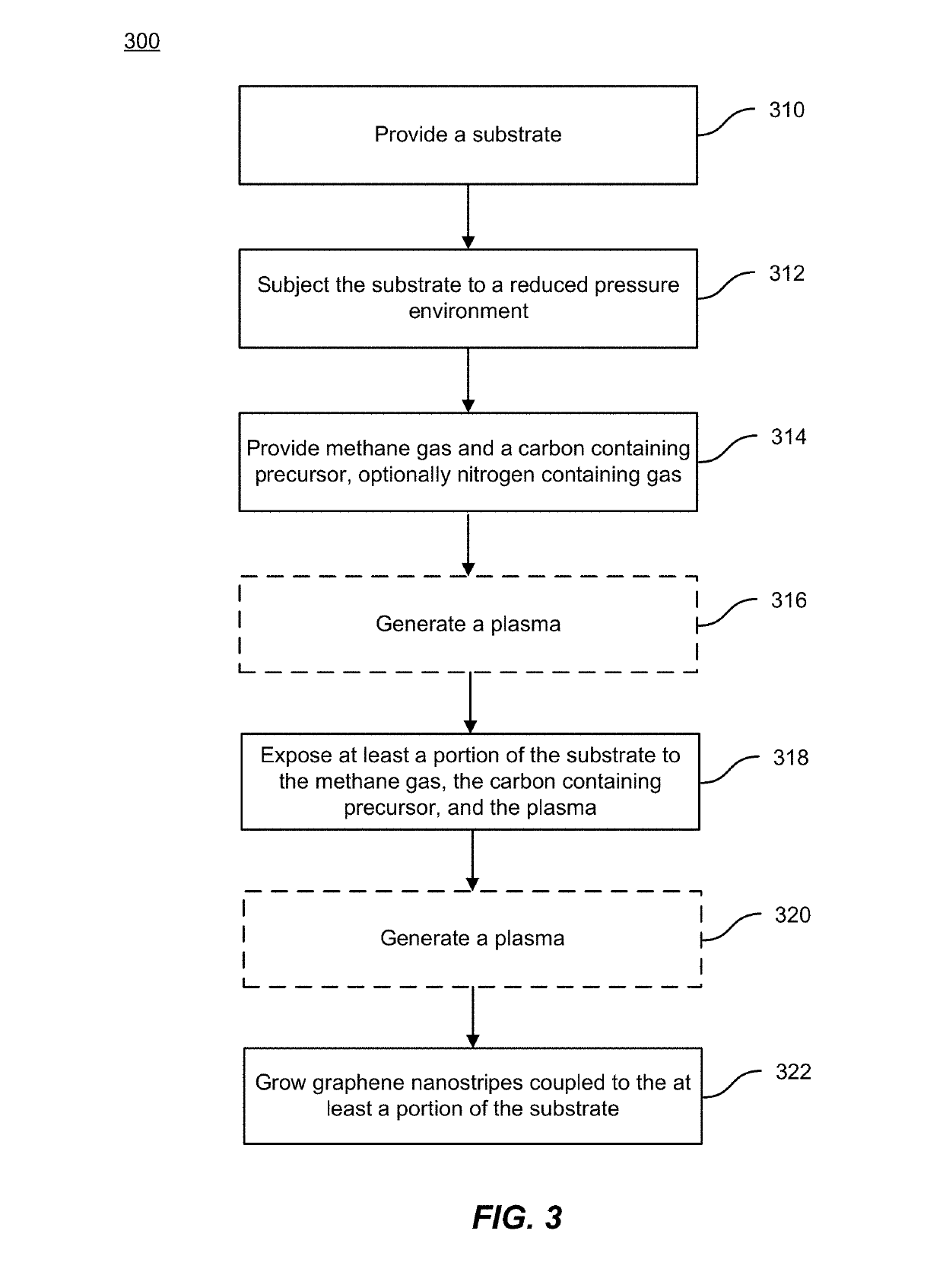Method and system for growth of graphene nanostripes by plasma enhanced chemical vapor deposition
a graphene nanostripe and chemical vapor deposition technology, applied in the direction of graphene nanoribbons, chemical vapor deposition coatings, coatings, etc., can solve the problems of incompatibility of device fabrication and integration, need for multiple steps, and inability to meet the requirements of many applications, etc., to achieve enhanced chemical vapor deposition, high yield, and high aspect ratio
- Summary
- Abstract
- Description
- Claims
- Application Information
AI Technical Summary
Benefits of technology
Problems solved by technology
Method used
Image
Examples
Embodiment Construction
[0037]The present invention relates generally to methods and systems for material synthesis. More specifically, the present invention relates to methods and systems for growing high quality graphene nanostripes using a high-yield, single-step, low-temperature catalytic growth process. The methods and techniques can be applied to a variety of graphene growth systems including CMOS compatible semiconductor growth processes.
[0038]Without limiting embodiments of the present invention, we refer to structures described herein as graphene nanostripes, to indicate their large aspect ratios and to differentiate these graphene nanostripes from graphene nanostripes that exhibit quantum confinement and from graphene nanosheets or nanowalls that are generally wider than the graphene nanostripes discussed herein.
[0039]FIG. 1 is a simplified schematic diagram illustrating a PECVD system for growing graphene nanostripes according to an embodiment of the present invention. As illustrated in FIG. 1, ...
PUM
| Property | Measurement | Unit |
|---|---|---|
| temperatures | aaaaa | aaaaa |
| frequency | aaaaa | aaaaa |
| pressure | aaaaa | aaaaa |
Abstract
Description
Claims
Application Information
 Login to View More
Login to View More - R&D
- Intellectual Property
- Life Sciences
- Materials
- Tech Scout
- Unparalleled Data Quality
- Higher Quality Content
- 60% Fewer Hallucinations
Browse by: Latest US Patents, China's latest patents, Technical Efficacy Thesaurus, Application Domain, Technology Topic, Popular Technical Reports.
© 2025 PatSnap. All rights reserved.Legal|Privacy policy|Modern Slavery Act Transparency Statement|Sitemap|About US| Contact US: help@patsnap.com



